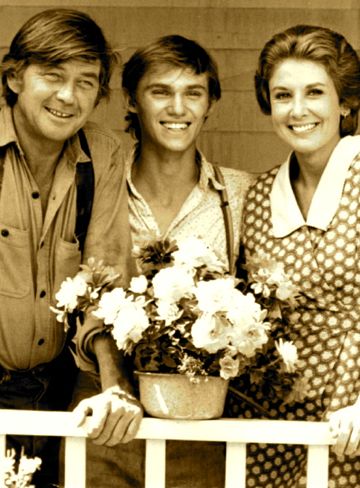Sandwiched: Return of multi-generational household?

AMERICANS LOVE MULTIGENERATIONAL FAMILIES, when they appear in romantic novels, films and TV series. From its debut in 1972, new episodes and made-for-TV movies were produced in "The Waltons" series until the 1990s. The series continues to air regularly on cable TV, is distributed via Netflix and is sold in DVD sets.
The American family continues to change. This week, we’ve discussed the expanding Sandwich Generation — middle-agers who are caring for their aging parents and their own children. We’ve looked at how care includes emotional support as well as money, the 20th anniversary this week of the Family & Medical Leave Act, and the rising trend of grandparents who are raising their grandchildren.
We close the week by considering another trend: the return of the multi-generational family.
Were you raised in one? Live in one now?
Multi-generational families were the norm in the past, at least in our romantic version of the past. In 1940, one in four American lived in a multi-generational household, defined as two or more adult generations, or a grandparent and another generation, living together under the same roof.
After World War II, the proportion of Americans living in these multi-generational arrangements started to decline. My family wasn’t part of the trend. I grew up with a grandfather who lived with us. But, for most American families, the nuclear family became the norm. By 1980, only 12 percent of Americans lived in a multi-generational family, according to a Pew Center analysis of U.S. Census data.
But then the trend reversed. Each year, more and more Americans were living in extended households. Now, 16 percent of Americans live in multi-generational households, a figure we haven’t seen for decades. That’s almost 50 million Americans. The reversal occurs in all major demographic groups, Pew finds.
Why the change?
A recent reason for the reversal is the poor economy. More adult children are returning home (or not leaving home). This is the main reason the Sandwich Generation feels squeezed, as we discussed Monday. But there are other reasons. Asian and Latin American immigration is another factor—these immigrants are likely to live in extended families.
The big generation of Baby Boomers is yet another factor. Simply put, the size of this generation offers more opportunities for their aging parents to live with them. Cuts to Medicare might be another reason, according to Pew analysts. Given the possible cuts to Medicare that a new budget accord might entail, this could become a bigger and bigger factor in the years ahead.
Were you raised in a multi-generational household?
Do you live in one now?
Wayne Baker is a sociologist on the faculty of the University of Michigan Ross School of Business. Baker blogs daily at Our Values and can be reached at ourvaluesproject@gmail.com or on Facebook.


Comments
David Horgan
Mon, Feb 25, 2013 : 2:57 p.m.
I co-wrote a book with Shira Block called, "When Your Parent Moves In" because I create a multi-generational household without thinking things through. If you don't follow a plan, you could have a family and financial disaster!